Salsa Verde
- By Jennifer Segal
- Updated July 28, 2025
- 30 Comments
- Leave a Review


This post may contain affiliate links. Read my full disclosure policy.
Zesty, bold, and just the right amount of smoky, this homemade salsa verde perks up everything from tacos to grilled chicken—and it comes together in no time.
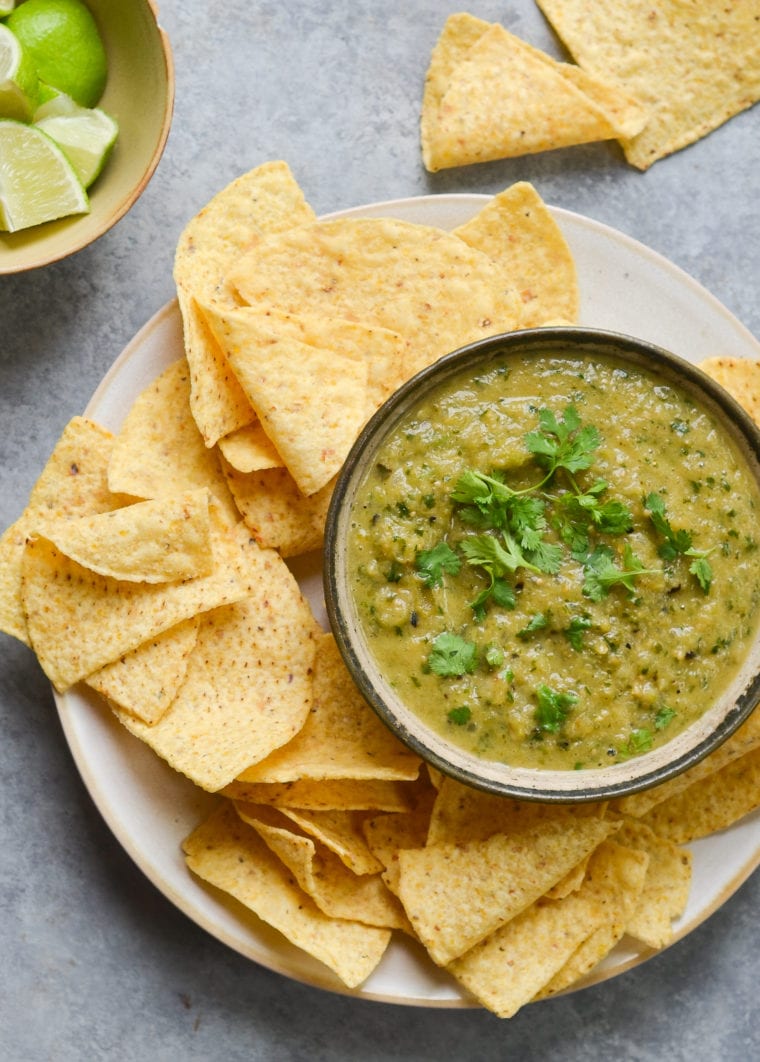
While traditional salsa has a tomato base, salsa verde—or green salsa—gets its vibrant color (and name) from a handful of green ingredients. The bright, tangy flavor comes mostly from tomatillos, those small green fruits with a tart bite, along with green chili peppers like jalapeños or serranos, plus cilantro, onions, garlic, and lime juice. To get that lightly charred, roasty flavor you expect from a good salsa verde, the vegetables are usually roasted or broiled first.
While it’s a classic with tortilla chips, salsa verde is way more versatile than that—try it as a sauce for quesadillas, or shrimp tacos, drizzle it over carne asada or chicken fajitas, or spoon it over cilantro lime rice. However you use it, this flavorful salsa is one you’ll be happy to have on hand.
“I just made this to take to a friend’s for dinner tomorrow night. I am not sure it will make it there…I keep giving it another taste, and another and another…”
What You’ll Need To Make Salsa Verde
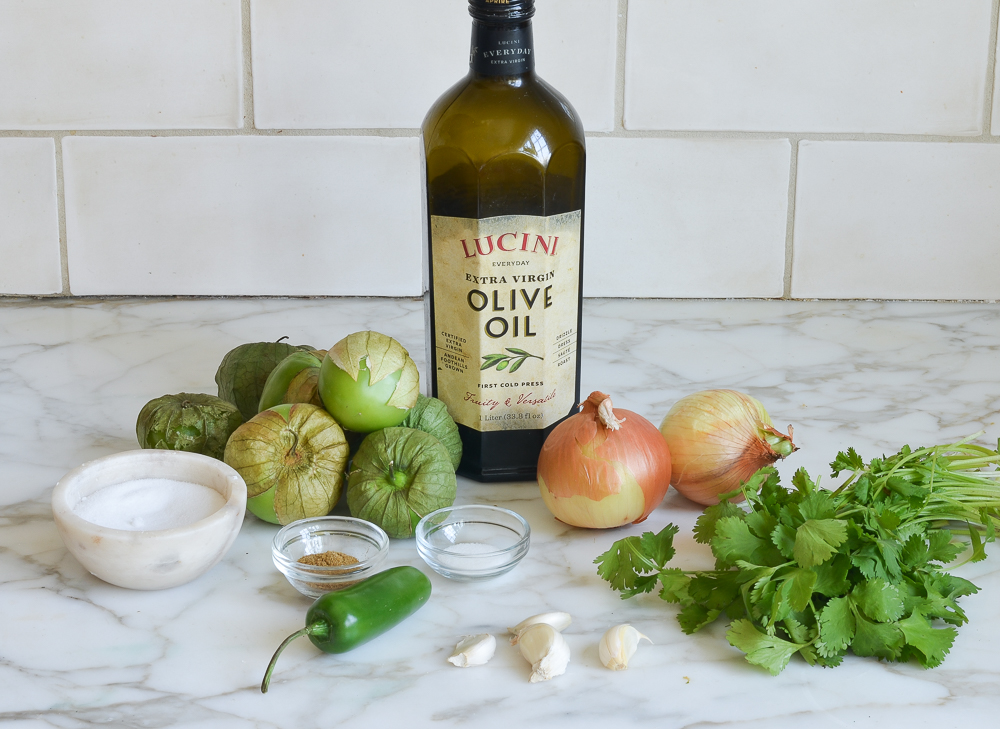
- Tomatillos: The main ingredient in salsa verde, tomatillos are a tart Mexican fruit that look like small green tomatoes wrapped in papery husks. They’re related to tomatoes but have a distinct, tangy flavor—and they’re not the same as green tomatoes, which are just unripe tomatoes. You can find tomatillos in most grocery stores. Look for ones that are bright green, firm (but not rock-hard), and bulging slightly from their husks. For even roasting, try to choose tomatillos that are close in size.
- Onion, garlic, jalapeño & olive oil: Roasted together to mellow their bite and deepen their flavor, creating a savory, spicy foundation for the salsa. (Pro tip: Remove the seeds and ribs from the jalapeño for a milder salsa, or leave them in for more kick. You can also swap in other chili peppers to change the heat level.)
- Salt, cumin, sugar & cilantro: This mix brings it all together—earthy warmth from cumin, brightness from cilantro, balance from a touch of sugar, and just enough salt to sharpen the flavor.
- Jump to the printable recipe for precise measurements
Step-by-Step Instructions
Step 1. Broil the vegetables. Set an oven rack about 5 inches below the broiler and preheat it. Line a rimmed baking sheet with heavy-duty foil, then add the tomatillos, onions, garlic, jalapeño, and a drizzle of oil. Toss everything right on the sheet with your hands or a spatula, then broil for 10 to 12 minutes, until the veggies are softened and nicely charred. Broiling adds a smoky, charred flavor you just don’t get from raw ingredients.
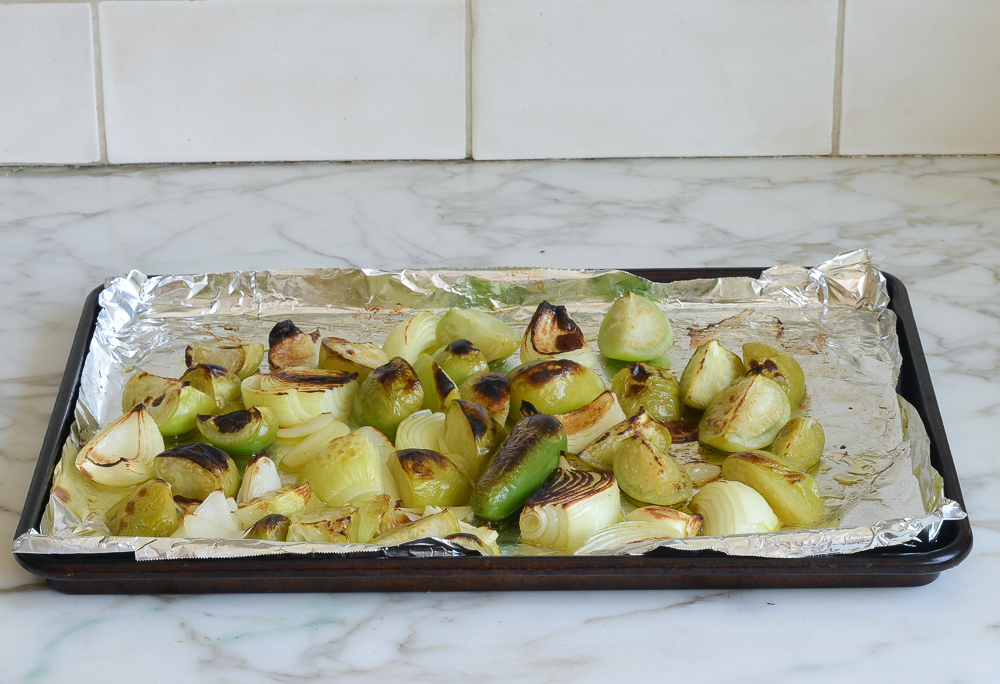
Step 2. Transfer to food processor. Scrape the vegetables and any juices into a food processor fitted with the metal blade. Add the salt, cumin, sugar, and cilantro.
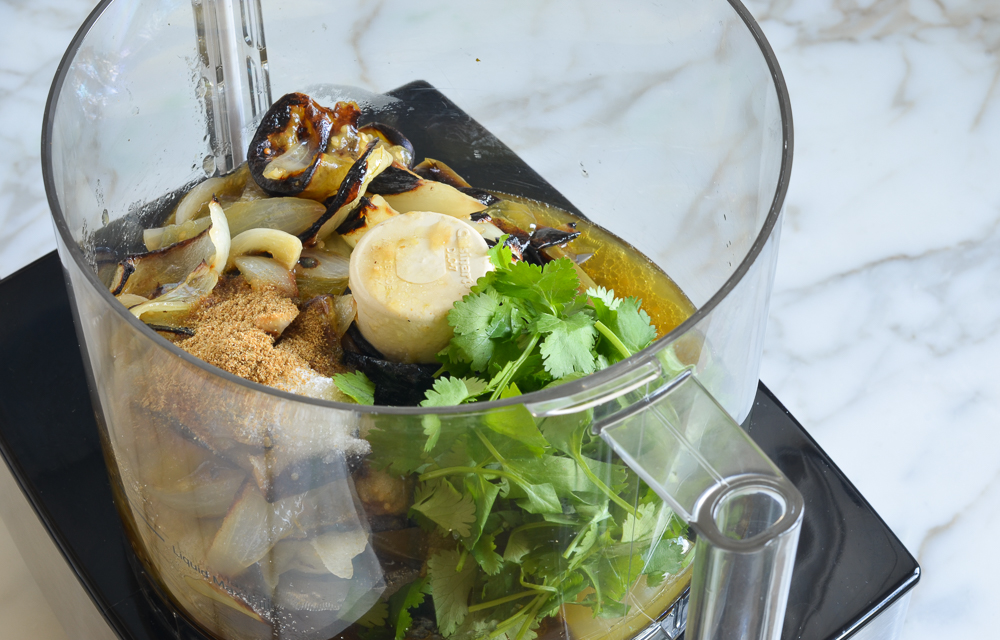
Step 3. Blend and season. Pulse until the salsa is blended but still a little chunky—you want some texture. Taste and adjust the seasoning, adding more salt or lime juice, if needed.
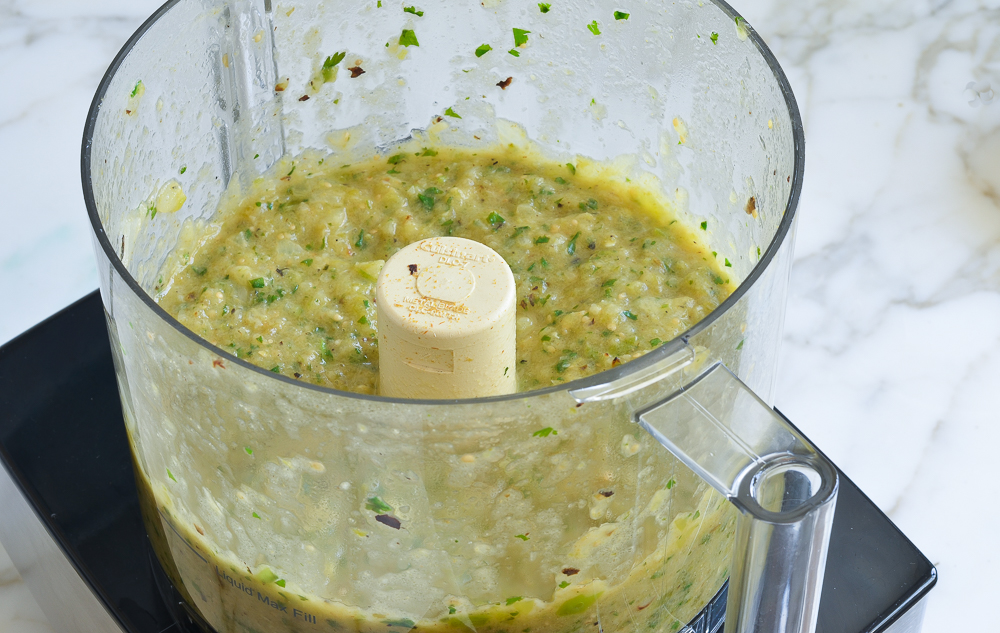
Step 4: Serve or store. Transfer the salsa to a bowl and serve warm, at room temperature, or slightly chilled. Salsa verde keeps well—store it in the fridge for up to 3 days or freeze for up to 3 months.
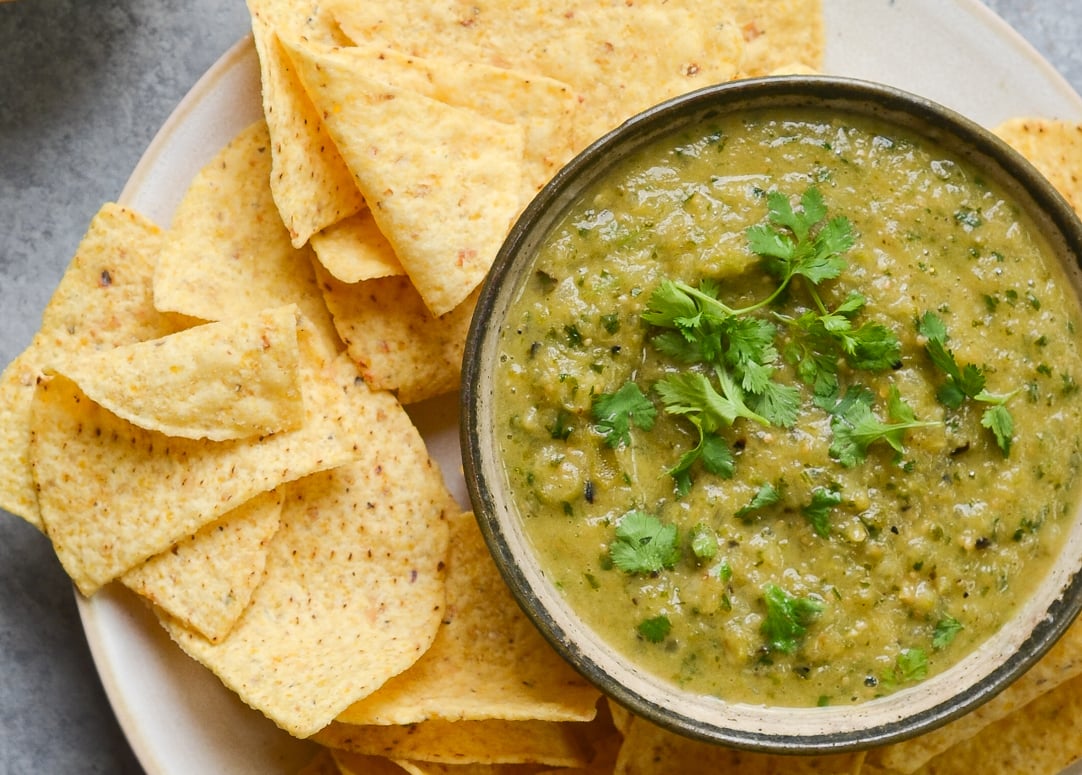
Video Tutorial
Bring on the Chips: More Crowd-Favorite Dips
Salsa Verde

This easy salsa verde brings bold, fresh flavor—perfect for taco night or passing around with chips.
Ingredients
- 1¼ lbs tomatillos, husked, rinsed, and quartered
- 2 small yellow onions, cut into 1-inch wedges
- 4 cloves garlic, peeled
- 1 jalapeño pepper, left whole (or remove the ribs and seeds for a mild salsa)
- 3 tablespoons extra virgin olive oil
- 1 teaspoon salt
- 1 teaspoon ground cumin
- ⅛ teaspoon sugar
- ¾ cup packed fresh cilantro leaves, plus a bit more for serving
Instructions
- Set an oven rack about 5 inches beneath the heating element and preheat the broiler. Line a rimmed baking sheet with heavy-duty aluminum foil.
- Place the tomatillos, onions, garlic, jalapeño pepper and oil directly on the prepared baking sheet and toss with your hands or a rubber spatula. Broil until softened and slightly charred, 10-12 minutes.
- Transfer the vegetables and juices to a food processor fitted with the metal blade. Add the salt, cumin, sugar, and cilantro and pulse until chunky. Taste and adjust seasoning, if necessary. Transfer to a bowl and sprinkle with chopped cilantro if desired. Serve the salsa warm, at room temperature, or slightly chilled.
- Note: This recipe is not meant for canning.
- Make Ahead Instructions: The salsa can be made up to 3 days ahead of time and stored in a covered container in the refrigerator.
- Freezer-Friendly Instructions: The salsa can be frozen in an airtight for up to 3 months. Defrost in the refrigerator overnight before serving.
Nutrition Information
Powered by ![]()
- Per serving (12 servings)
- Serving size: 1/4 cup
- Calories: 53
- Fat: 4 g
- Saturated fat: 1 g
- Carbohydrates: 4 g
- Sugar: 2 g
- Fiber: 1 g
- Protein: 1 g
- Sodium: 153 mg
- Cholesterol: 0 mg
This website is written and produced for informational purposes only. I am not a certified nutritionist and the nutritional data on this site has not been evaluated or approved by a nutritionist or the Food and Drug Administration. Nutritional information is offered as a courtesy and should not be construed as a guarantee. The data is calculated through an online nutritional calculator, Edamam.com. Although I do my best to provide accurate nutritional information, these figures should be considered estimates only. Varying factors such as product types or brands purchased, natural fluctuations in fresh produce, and the way ingredients are processed change the effective nutritional information in any given recipe. Furthermore, different online calculators provide different results depending on their own nutrition fact sources and algorithms. To obtain the most accurate nutritional information in a given recipe, you should calculate the nutritional information with the actual ingredients used in your recipe, using your preferred nutrition calculator.
See more recipes:
Comments
Add a Comment Cancel reply
This site uses Akismet to reduce spam. Learn how your comment data is processed.
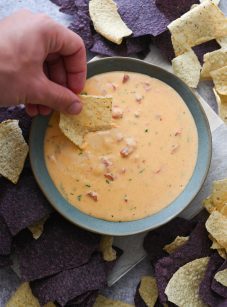
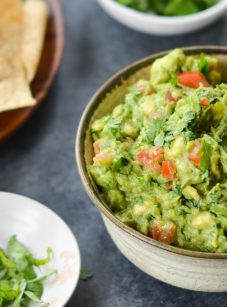


Fresh and delicious! Herbaceous and full of flavor. Made it for NYT Cooking salsa verde crockpot chicken. Served with cilantro rice. Will definitely save it and use again. Thank you!
Recipe was perfect as written. I’ve tried a few other salsa verde recipes that were hit and miss. I’ll be saving this one for the next time I get tomatillos in my crop share box.
Jenn,
I love your salsa verde recipe, it includes the statement that this is not meant for canning.
I have a pressure canner. Couldn’t I can the salsa with the same canning time as tomatoes?
Candace
Hi Candace, while it may be okay, I don’t know enough about canning to say whether or not it would be safe. Sorry!
Easy and delicious, such vibrant flavors! Didn’t have cilantro, so I subbed parsley and lime juice. Worked great.